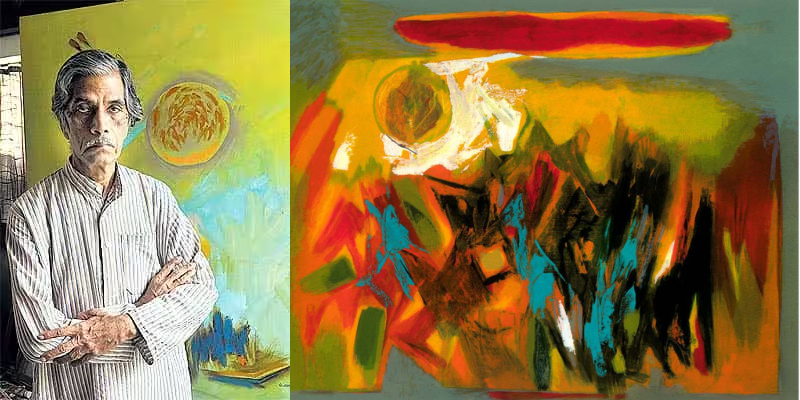Sachida Nagdev was born on his day October 25, 1939. At the young age of nine, he sought out freehand guidance from neighbourhood signboard painters, which marked the beginning of his career as a painter. His love of the arts was sparked by this early experience, and he spent the rest of his life developing his gift.
Nagdev started a more formal artistic career in 1961 when he enrolled at Mumbai’s Sir J.J. School of Art and graduated with a general diploma in painting. He pursued a postgraduate study in Ancient Indian History in 1962 and later a postgraduate degree in Painting from Vikram University in Ujjain in 1970, driven by his profound fascination with India’s rich cultural legacy. Nagdev travelled to North India under the guidance of the distinguished Indian archaeologist Dr. V.S. Wakankar, and he produced important discoveries and replications of prehistoric rock shelters.

The work of Sachida Nagdev bears witness to his unshakable commitment to his profession and his abiding respect for India’s rich cultural legacy. His harmoniously coloured abstract oil paintings evoke a sense of harmony between innovation and tradition. His ability to render human forms in representational art was further demonstrated in his later works, which further demonstrated his versatility as an artist.

The creative talent of Sachida Nagdev was not unappreciated. He has had over thirty solo shows in India’s major cities as well as other major places such as France, Germany, and Japan. He has participated in important art fairs, including the Osaka Triennale in Japan, the Biennale in Bhopal, and the Indian Triennale in New Delhi.

His paintings are featured in the collections of illustrious organisations including the Contemporary Art Museum in Osaka, Japan, and the National Gallery of Modern Art in New Delhi, demonstrating the recognition and appreciation of his work on a global scale. Travelling nonstop, Nagdev saw the scenery of Europe, Japan, India, Nepal, and the Middle East. He also regularly took part in national and international exhibitions.

Nagdev’s extraordinary career was recognised with many honours, such as the 1990 Yomiuri Telecasting Award at the Osaka Triennale and the 1997 Shikhar Samman, the highest civilian award from the Madhya Pradesh government. His avant-garde method of creating art helped shape the Indian art landscape by fusing contemporary abstract painting techniques with Indian miniature painting styles.
On this day of his birth, we honour Sachida Nagdev’s legacy as a trailblazer in the Indian art scene, a link between the past and present, and an encouragement to budding artists everywhere.
Read Also:





